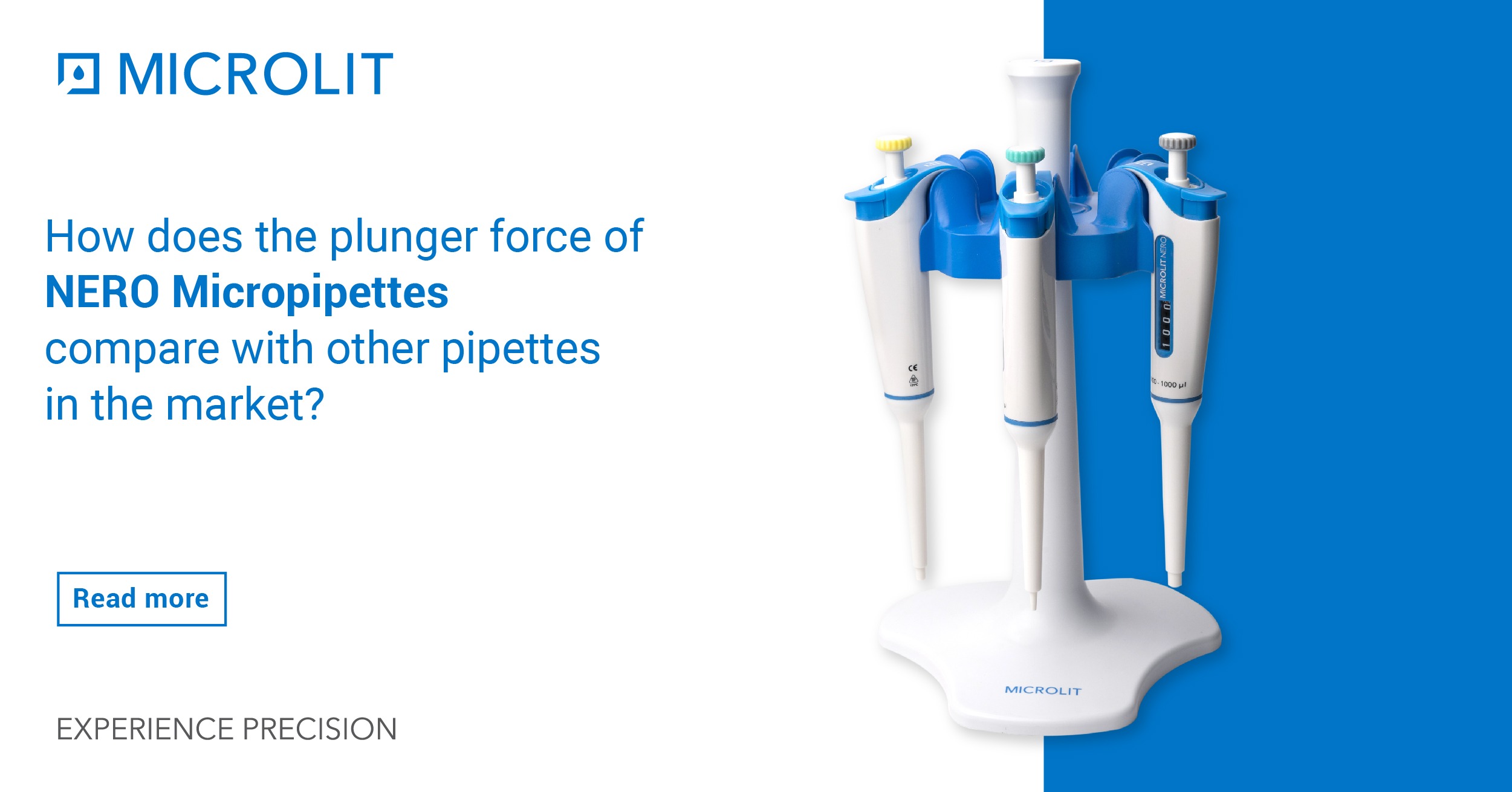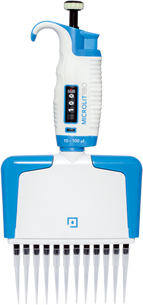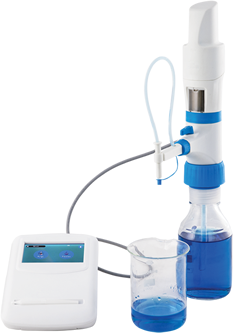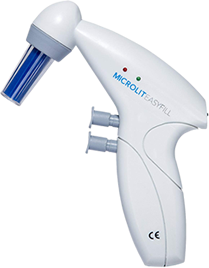Micropipettes are widely used across microbiology, chemistry, medical and soil testing laboratories for the precise transfer of different liquid samples. They offer a quick way to meet workflow needs, from preparing the initial liquid sample to placing it in a system for subsequent analysis. Poor ergonomics as a function of the design of the micropipette can cause RSI (Repetitive Strain Injury) and carpal tunnel syndrome. RSI is common amongst people involved in jobs where they are exposed to cumulative trauma such as manual liquid handling in the laboratory. To learn how to avoid RSI, please refer to our blog post. On the other hand, carpal tunnel syndrome is caused by pressure on the median nerve. The carpal tunnel is a tiny passageway on the palm side of the hand bordered by bones and ligaments. When the median nerve is crushed, Numbness, tingling, and weakness in the hand and arm can occur.
To avoid these conditions, one must choose a pipette that is lightweight and has good ergonomics. A crucial factor of good ergonomics is the amount of force necessary to perform the pipetting operations – aspiration, dispensing and tip ejection. The thumb primarily applies these forces on the pipette components. To relieve stress on the thumb and the hand, pipette manufacturers have generally attempted to minimize these pipetting forces.
What is the Plunger force in the Micropipettes?
Plunger Force is the amount of force required to be applied by the thumb to aspirate and dispense liquid samples with a manual pipette. This force may differ depending on the pipette design, construction and the technique used when pipetting the samples.
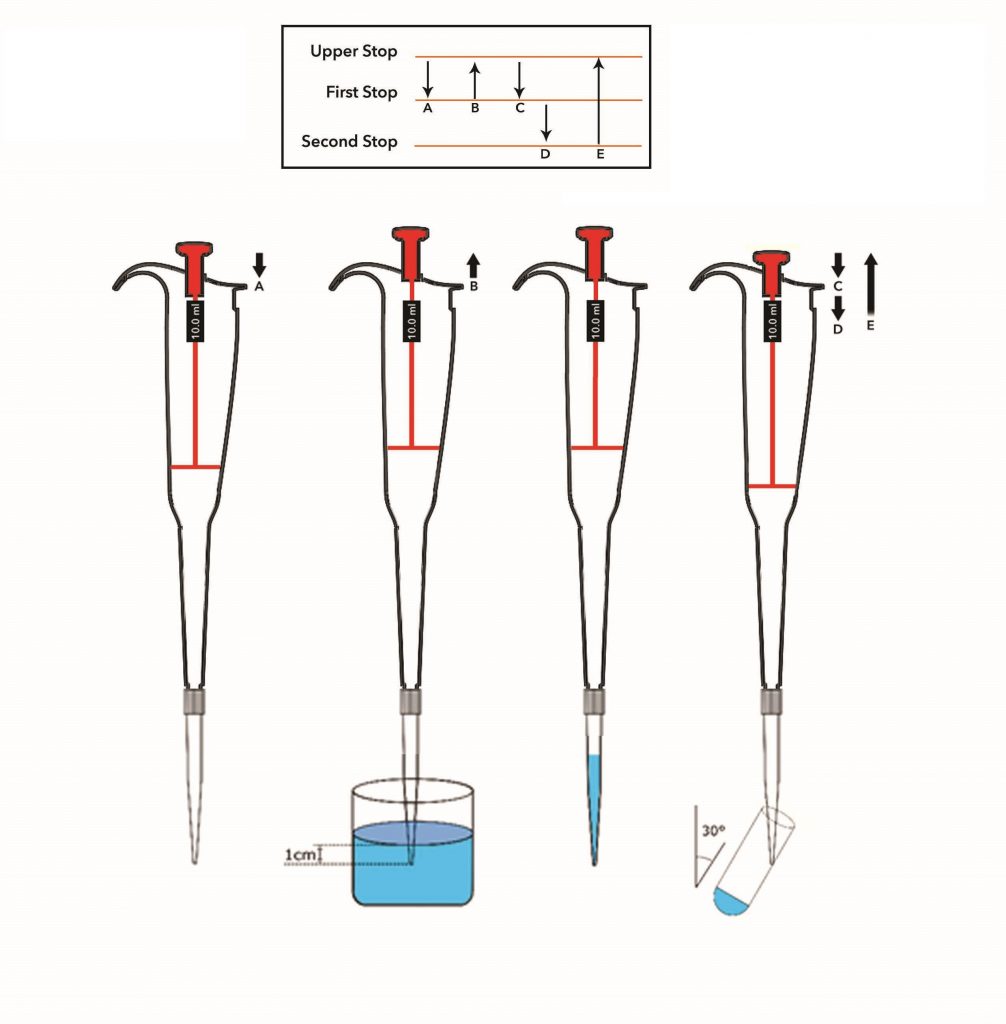
Typically, the force necessary to move the plunger to the first stop is between 3 and 15 N and the force required to move the plunger to the second stop can be as high as 40 N.
What are the First Stage and Second Stage Plunger Forces?
The first stage plunger force is the amount of force required to press the plunger to the first stop of the pipette. The first stop, which requires less effort from the plunger than the second stage, is also referred to as the soft stop. The first stage plunger force is required to aspirate the liquid in the tip. To draw up the liquid precisely, you must maintain downward pressure on the plunger and immerse the pipette tip in the liquid.
After arriving at the first stop, the force required to dispense the liquid sample is known as the Second Stage Plunger force. The Hard stop is another name for the second stop that occurs when the plunger approaches the plunger’s endpoint. When dispensing to the first stop, a small amount of the sample may stay in the micropipette tip due to liquid surface tension. The second stage is required to force out the remainder of the sample.
What factors affect the plunger Force?
The plunger force in a pipette may be affected by various product design factors:
- Piston Spring: The number of coils, wire diameter and the length of the piston spring should be optimized to provide suitable plunger force while not compromising the durability of the pipette
- Engagement between the piston and the O-Ring must be optimal to reduce frictional force between them without introducing the possibility of creating leakage in the instrument.
We compared the plunger forces of different pipettes available in the market with our brand new NERO micropipettes and the old range of RBO pipettes. We found that Microlit NERO has the lowest plunger force in the market, making it the most ergonomic pipette available for your laboratory needs.
For Single-Channel Micropipette:
| NRO | RBO | Brand 1 (China) | NRO | RBO | Brand 1 (Germany) | Brand 2 (Germany) | Brand 3 (USA) | |
| Volume (μL) | 200 | 200 | 200 | 1000 | 1000 | 1000 | 1000 | 1000 |
| Weight (gm) | 67 | 73 | 78 | 71 | 73 | 93 | 83 | 83 |
| Plunger Force at 1st Step (N) | 0.3 | 0.9 | 0.8 | 0.55 | 0.9 | 0.55 | 0.75 | 0.37 |
| Plunger Force at 2nd Step (N) | 1.5 | 1.8 | 1.9 | 1.5 | 1.8 | 1.8 | 2.3 | 1.28 |
For Multi-Channel Micropipette:
| NRO | RBO | Brand 1 (USA) |
Brand 2 (USA) |
NRO | RBO | Brand 1 (USA) |
|
| Channel | 8 | 8 | 8 | 8 | 12 | 12 | 12 |
| Volume (μL) | 20-200 | 20-200 | 20-200 | 10-100 | 20-200 | 0.5-10 | 1-10 |
| Weight (gm) | 125 | 159 | 162 | 158 | 146 | 159 | 176 |
| Plunger Force at 1st Step (N) |
0.61 | 1.3 | 0.6 | 0.9 | 0.7 | 1.1 | 0.9 |
| Plunger Force at 2nd Step (N) |
1.8 | 2.5 | 1.6 | 2.6 | 1.8 | 2.2 | 2.8 |
Microlit has achieved the lowest plunger force by optimizing the plunger spring, optimizing the engagement between the O-ring and metal piston and carefully selecting piston, spring and O-Ring materials. Moreover, we employ thorough durability testing using proprietary test machines to ensure that the selection of components and materials contribute to the longevity of our instrument, while enhancing the ergonomics.
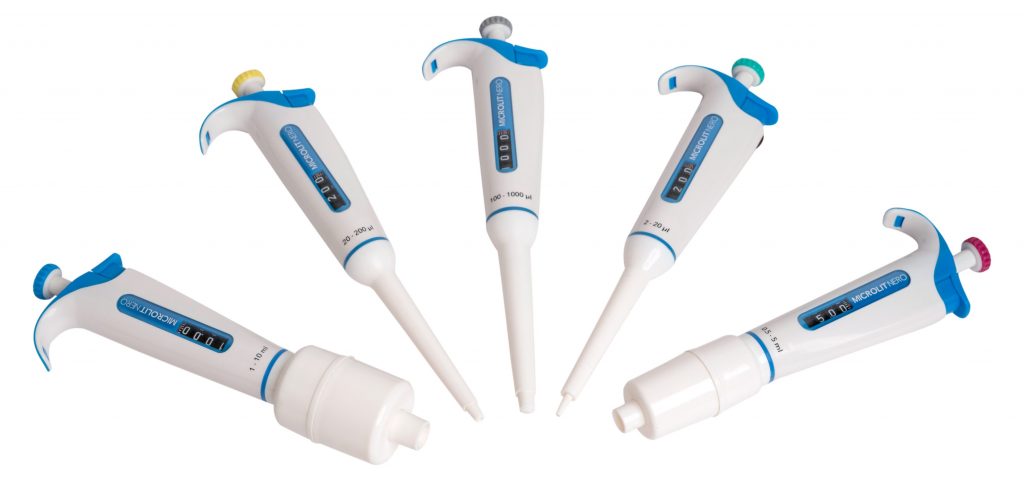
Some other key features offered in Microlit’s NERO micropipettes:
- Minimum dead air space between the piston and the liquid in the tip – This lowers air compression and allows the user to obtain precision in real-world lab settings.
- Unique calibration mechanism/tool which allows quick in-lab calibration in a single operation WITHOUT disengaging the digits from the plunger mechanism.
- In-built tip ejector is designed to eject tips with optimal force.
- Tip-cone designed to be compatible with the majority of internationally recognised tips, increasing the instrument’s industrial interoperability.
- A distinct click at each volume change ensures that the volume is perfectly set and avoids accidental volume changes.
To know more about the Microlit NERO, drop a mail to info-usa@microlit.com or visit NERO Product page.






 6102
6102